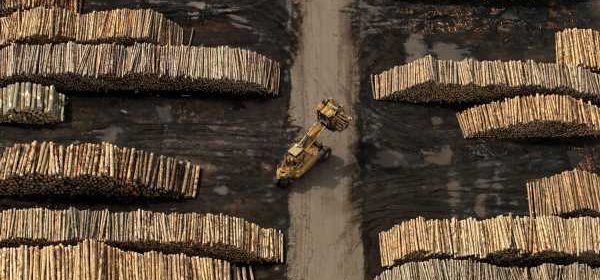Days of methyl bromide at Port of Tauranga ‘numbered’ but concerns remain

New Zealand’s Environment Protection Authority has banned the use of methyl bromide on ships because the risks to human health are too high.
However, it is defending not banning the toxic substance completely, prompting a response from local environmental representatives and advocates.
Last month, the authority announced greater restrictions on the gas, including banning fumigation aboard ships in New Zealand from January 1, 2023. The Port of Tauranga has already stopped ship-hold methyl bromide fumigation but some people say more action is needed despite the ban.
Fumigation removes harmful micro-organisms by completely filling an area with gaseous pesticides — or fumigants — to suffocate or poison the pests within. Methyl bromide is used but is a colourless, odourless, toxic, non-flammable gas. Trading nations such as India and China require it to be used on New Zealand logs.
In the Bay of Plenty, methyl bromide is used primarily for quarantine or pre-shipment applications and the fumigator needs resource consent.
Fumigation of logs for export accounts for about 95 per cent of methyl bromide use in New Zealand. In the year to June 2020, 154 tonnes was used at the Port of Tauranga, although continued use is expected to decrease.
In a Bay of Plenty Regional Council Monitoring and Operation Committee meeting on Tuesday, compliance manager Stephen Mellor told councillors that staff were ready and eager to monitor the new rules when they came into effect.
A deadline for New Zealand operators to recapture fumigation emissions, set in 2010, was expected to expire in October 2020 but pressure from the industry delayed this until last month when authorities announced gradual increases to the recapture rates.
Council chairman Doug Leeder said Tauranga was one of the main centres in New Zealand that used methyl bromide.
Councillor Paula Thompson said although there appeared to be positive progress, “this will be an issue that will face the city of Tauranga and us as a major risk for some time”.
Councillor Matemoana McDonald said she was not satisfied enough traction had been made on the issue, which was “huge” for residents at Whareroa Marae and community group Clean the Air Mount Maunganui.
Clean the Air Mount Maunganui’s Emma Jones told the Bay of Plenty Times although the decision was progress and gave the regional council more teeth, it had been a long time coming.
“I would have liked the industry to be much more proactive during the 10 years that they had. Some companies invested in debarking technology and worked hard to that deadline. Others didn’t do much at all.
“I’m disappointed because I think good corporate behaviour should be rewarded.”
Jones said the authority’s other restrictions such as larger buffer zones meant she could “see the days of methyl bromide use at the Port of Tauranga numbered”, which was a “good thing”.
A Port of Tauranga spokeswoman said this year, after consultation with stakeholders, the port would insist recapture technology was applied to 100 per cent of methyl bromide fumigations on log stacks from January 1.
“This is over and above any current regional or national requirements. Recapture technology is currently applied to around 80 to 85 per cent of log stack fumigations.”
Dr Chris Hill, general manager of the authority’s hazardous substances group said regulating such substances required careful balance between environmental, health, economic and cultural factors. Hill said the rule change was “significant”.
“The risks to human health and the environment outweigh the benefits.”
The authority also brought in stepped increases regarding recapture rates from containers and covered log stacks, higher scrutiny of reports, larger buffer zones and greater community notification of fumigation.
Planting project for industrial area
The aesthetics bordering some of Mount Maunganui’s industrial area are expected to be become a feast for the eyes.
In the committee meeting on Tuesday, future planting projects in the area were discussed.
Senior regulatory project officer Reece Irving said the Port of Tauranga and Ballance Agri-nutrients had identified land areas for future planting projects. These included enhanced boundary planting around Ballance, and planting the periphery of the Hewletts Rd log-yards.
The regional council and Clear the Air were contacting all industrial landowners in Mount Maunganui to identify suitable areas of land on industrial sites for screen planting in the future.
Methyl bromide – at a glance
Different agencies play a role in the regulation and use of methyl bromide in New Zealand and in the Mount Maunganui industrial area:
• The Environmental Protection Authority decides whether a fumigant can be used in New Zealand.
• WorkSafe set the rules around safe use of methyl bromide nationally.
• Regional councils set regional rules for the use of methyl bromide. Bay of Plenty Regional Council has been the only council to require a resource consent for methyl bromide use, and this has been in response to community concerns.
• Individual consents set specific requirements for individual operators. The current consent for methyl bromide fumigation sets requirements that are more stringent than the authority’s rules. The council’s compliance team monitors compliance against the consent conditions.
– Source: BOPRC
Source: Read Full Article

/cloudfront-ap-southeast-2.images.arcpublishing.com/nzme/MI5EDUPBFMXYAWRSYIETWQ3B7Q.jpg)
/cloudfront-ap-southeast-2.images.arcpublishing.com/nzme/KUAD7N5IHLJAEOI5PW33L2X4WQ.jpg)